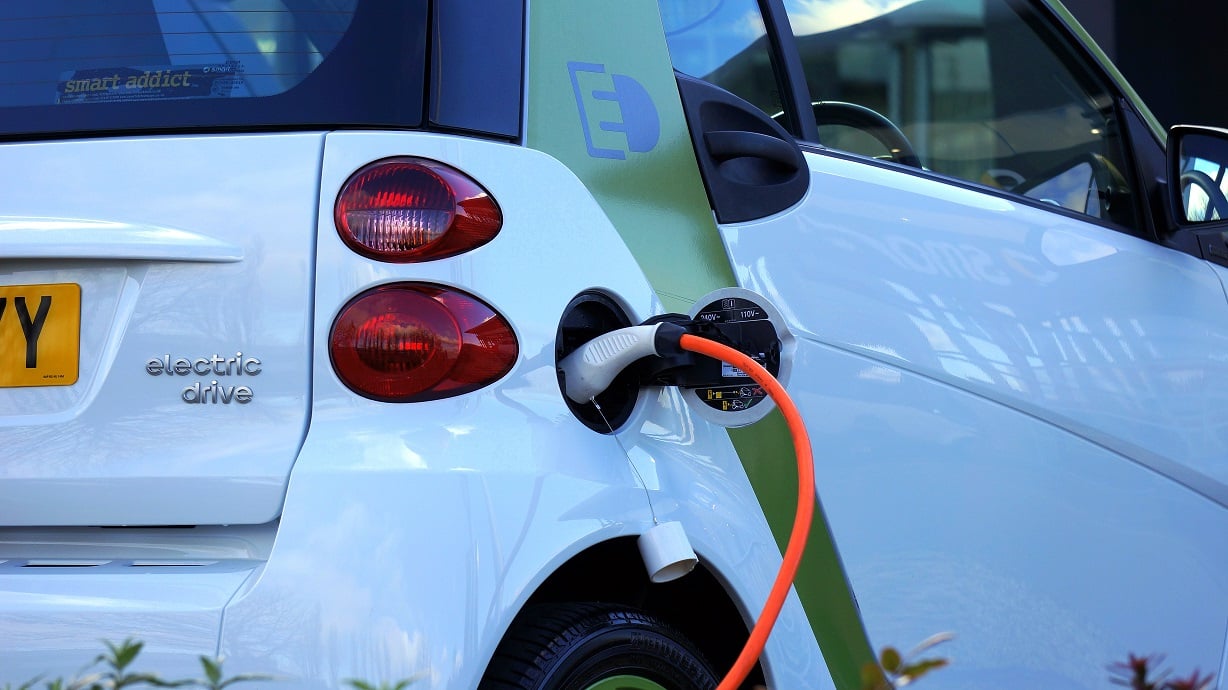
It’s no secret that EV ownership is reaching a tipping point in Britain. New registrations have surged from 3,500 in 2013 to more than 137,000 by March 2018, and analysis by Element Energy suggests that EVs could account for 30% of all new cars sales by 2030.
While the surge in EVs will play a key role in decarbonising road transport, it will also add new demands to the power network, particularly during times of peak demand. Making sure these peak demands can be managed to match with available generation will be vital to keeping the lights on and minimising costs for energy users and EV drivers.
Enjoy 12 months of exclusive analysis
- Regular insight and analysis of the industry’s biggest developments
- In-depth interviews with the industry’s leading figures
- Annual digital subscription to the PV Tech Power journal
- Discounts on Solar Media’s portfolio of events, in-person and virtual
Multiple studies have shown V2G technology has the capacity to tackle this challenge. If electric vehicles are left plugged into smart, two-way charging points when not in use, their batteries can feed power into the network at times of peak demand. Just 10 new Nissan LEAFs can store as much energy as a thousand homes typically consume in an hour.
Smart chargers can also control when cars recharge to avoid stressing the network and to store surplus power when demand is low. This will allow the grid to operate more efficiently, support higher levels of renewables, and should mean less reliance on fossil fuel power stations.
Machine learning can be utilised to profile drivers’ patterns of behaviour, meaning cars always have sufficient power for their needs. This is key, as it’s likely that drivers will be increasingly happy to earn extra money supporting the grid so long as they can use their car normally whenever they want.
So, while EVs present significant challenges, smart charging and V2G technology could help integrate them into the electricity network with minimum disruption.
The mission
A first of its kind, the V2GB consortium is investigating the kinds of incentives that could encourage EV drivers to engage with V2G technology. The study – one of 21 projects backed by £30 million (US$40.59 million) of government funds to make the UK a world leader in low-carbon vehicles – will develop driver-centred business models to support rapid growth of V2G technology.
The project will draw on the extensive industry knowledge, expertise and data of each partner to formulate pioneering business models. The goal is to explore ways to reward drivers who engage with V2G technology.
Electricity system partners, including the UK's transmission system operator (TSO) National Grid and Western Power Distribution, a regional distribution network operator (DNO) will advise on the range of ways EVs can support the energy system and the revenues this could generate. Meanwhile, major transport partners such as Nissan will provide real-life data on driver behaviour drawn from their experience of delivering more than 500,000 EVs worldwide.
Moixa, alongside industry partners like consultancy Cenex, will contribute expertise from the UK’s first domestic V2G trial.
Moixa has developed technology that can manage flows of energy to and from electric car batteries and aggregate them to function as a virtual power plant supporting the energy network. Its GridShare platform uses machine learning to understand drivers’ behaviour so EVs always have enough power for their needs, with drivers having the option to control the level of charge manually.
The results
This study is just one part of what is the largest and most diverse group of V2G research activities anywhere in the world. There are a range of studies working to develop the business proposition and core technology around V2G, and demonstrating the real life impact with large-scale trials.
This study is just getting going, but the outcomes have the potential to open the door to an era of V2G schemes that benefit EV drivers, utilities and business alike.
Research conducted prior to this project by Element Energy, one of the consortium partners, found that without V2G, EVs could account for 30% of new car sales by 2030, with 4.7 million on the road. However, potential V2G revenues could reduce the total cost of ownership of an EV by £1000. According to Elemnet Energy, this could result in EVs accounting for 40% of new car sales by 2030, with 6.5 million on the road. This would mean an extra 250,000 electric car and van sales worth £5 billion each year.
The V2GB study will stress test these estimates by testing the real world factors that will affect V2G participation, the revenue that could really be generated, as well as any necessary changes required of the market and policy environment.
On the topic of Britain's adaptation to e-mobility, visit Solar Media's Clean Energy News for an exclusive 'Long read' feature: “Driving Change – How the UK is ready and waiting for the electric future of transport”

